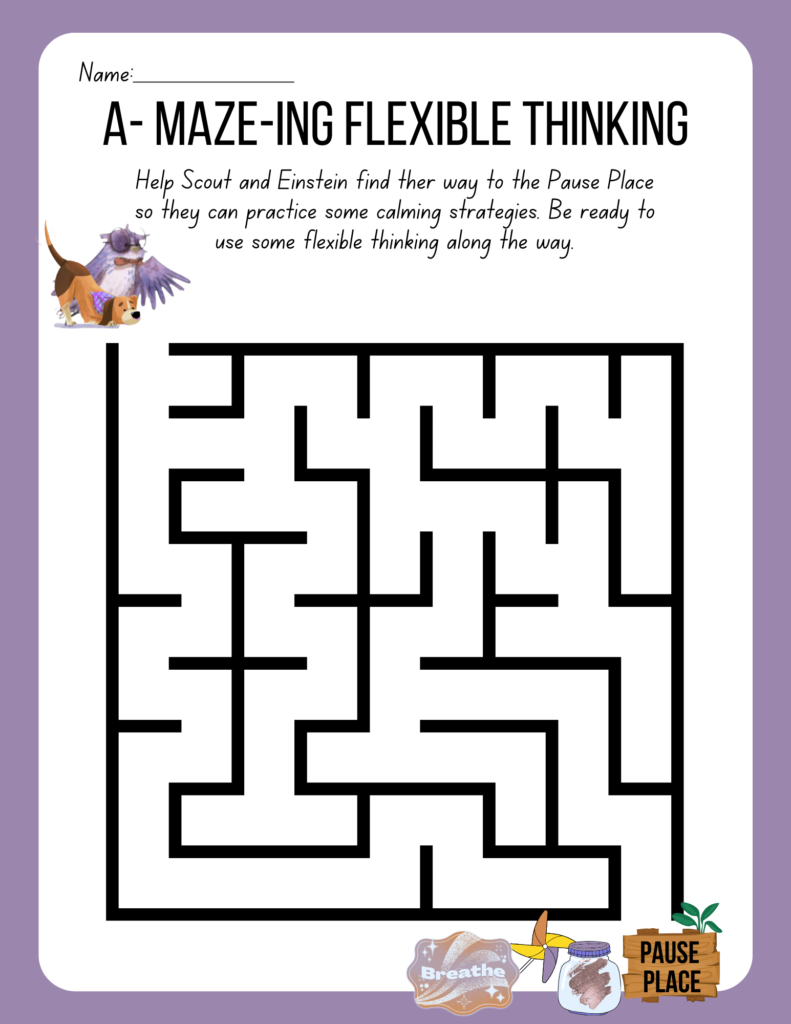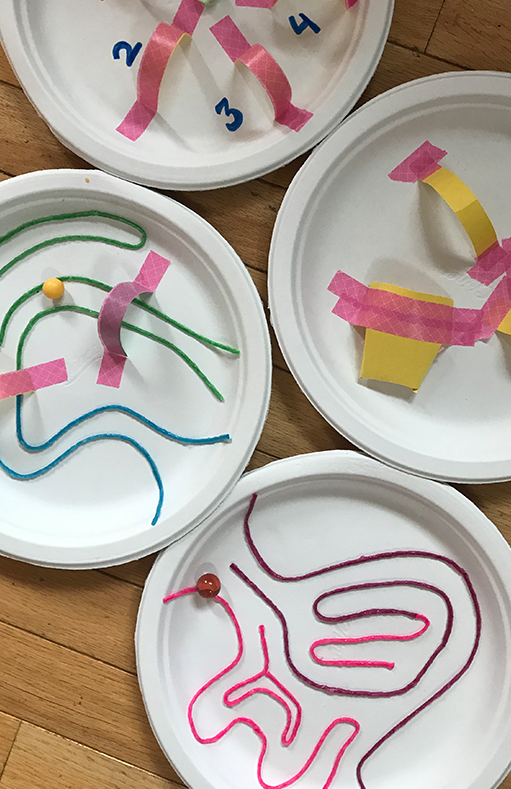Have you ever planned your day, only to have things go completely off track?
Maybe a traffic jam caused you to miss an important meeting. Perhaps you were all set to enjoy a sunny day at the park, only to be caught in a sudden downpour. For kids, these situations might look different, but the challenges feel just as real: a favorite toy breaks, a friend cancels a playdate, or a new challenge pops up at school.
What do we do when our plans fall apart or unexpected roadblocks pop up? This is where the power of flexible thinking comes in.
Life is Like a Maze
Imagine trying to move through a maze. Wouldn’t it be great if you could complete complex or unpleasant tasks by drawing a straight line from the start to the finish? Life would be so much easier if there were always quick and simple ways to solve problems or reach our goals. But real life often has twists and turns – just like a maze. Sometimes, things don’t go the way we planned. Other times, we hit a roadblock and need to find a new path.
In these moments, flexible thinking can help us pause, rethink, and try a new approach. It’s the key to staying calm, adapting to changes, and finding solutions – and it’s a skill that’s important for children and adults alike.
Using Mazes to Teach Flexible Thinking
So, how do we help children learn to navigate life’s twists and turns with flexibility and calmness? One great way is through mazes! Here are a few simple, hands-on activities that can help.

Paper Mazes:
Start with a simple paper maze. Ask children to complete it with a pencil, reminding them that just like in life, they may hit dead ends. When that happens, they need to find a new path. Encourage them to keep trying, even if it takes a few attempts.

Wikki Stix or Sticky Tape Mazes:
Offer options to cover the maze lines with Wikki Stix or sticky tape. This adds a tactile element, helping children think about the paths they choose differently. They can roll a marble through the maze, feeling each twist and turn and considering new routes.

Gel Mazes:
Use a gel maze as a sensory tool. Children can move a ball through the gel, practicing patience and calmness while they navigate the maze. This activity mimics the experience of working through unexpected challenges in a soothing, engaging way.
Situations that Require Flexible Thinking
Flexible thinking isn’t just about moving through a maze – it’s about navigating real-life situations, too. Here are a few examples that you can discuss with your students:
- A Change in Plans:
Imagine you’re looking forward to a fun outdoor activity, but suddenly it starts raining. How can you use flexible thinking to find a new way to have fun indoors? - A Problem with a Friend:
You’re playing a game, and your friend wants to change the rules halfway through. How can you stay calm and find a way to keep playing together that feels fair for both of you? - A Challenge at School:
You’re working on a difficult math problem and feel stuck. What can you do to try a new strategy, ask for help, or take a break to clear your mind?
Reflective Questions to Help Kids Practice Flexible Thinking
After completing the maze activities, ask children questions to help them reflect on their experiences:
- “How did you feel when you hit a dead end in the maze?”
- “What did you do to find a new way through the maze?”
- “Can you think of a time outside of this activity when you had to change your plans? How did you handle it?”
- “What strategies can you use next time you face an unexpected challenge?”
Flexible Thinking & Your Brain: Meet the Cranium Critters
In our Cranium Critters series, we introduce two brain buddies who help us understand how our brains react to challenges. Meet Scout, our safety pup, and Einstein, our wise old owl.
Einstein is our head thinker.
With his calm and thoughtful approach, Einstein helps Scout see that not every twist or turn is a threat. He encourages us to take a deep breath, think clearly, and try another way forward.
Scout is always on alert for danger.
Her job is to keep us safe. But sometimes, she can get a bit mixed up. When something is different, disappointing, or difficult, she might mistake it for something dangerous. A change in plans, a challenge at school, or a new routine might make Scout think it’s time to panic – even when it’s really just time to adapt
The Power of Flexible Thinking: Little Life Lessons • BIG Life Skills
By using mazes, we can help children visualize and practice the skill of flexible thinking. When we encourage them to pause, think, and try a new approach, we’re helping them build a toolkit of strategies that they can use throughout their lives. They learn to manage their emotions like Scout, think clearly like Einstein, and navigate the twists and turns of life with confidence and creativity.
So next time you encounter a curveball, remember to ask yourself, “What would Einstein do?” And help the little ones in your life embrace the maze, finding joy in the journey and flexibility in their thinking.
Looking for more fun activities?
Check out our Teachers Pay Teachers store for additional resources and lesson plans designed to make learning about the brain fun and engaging!
